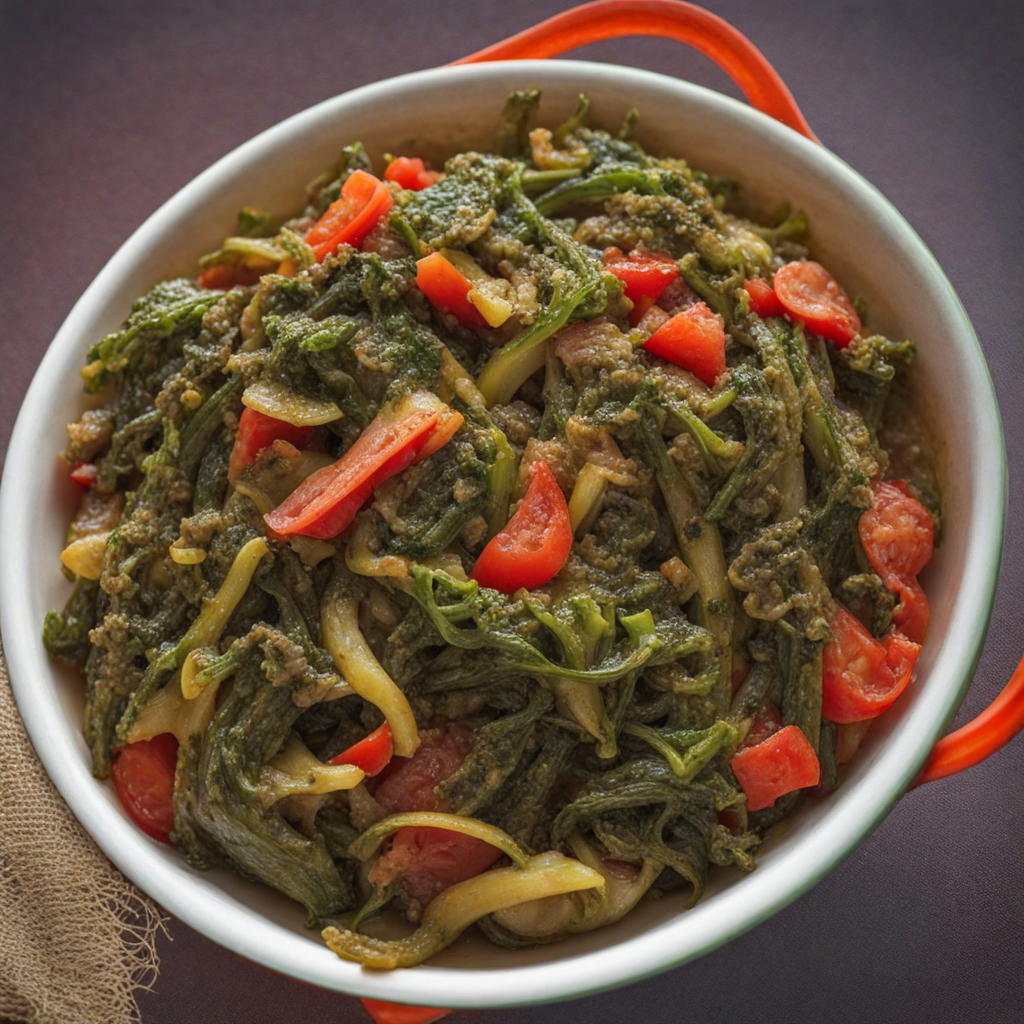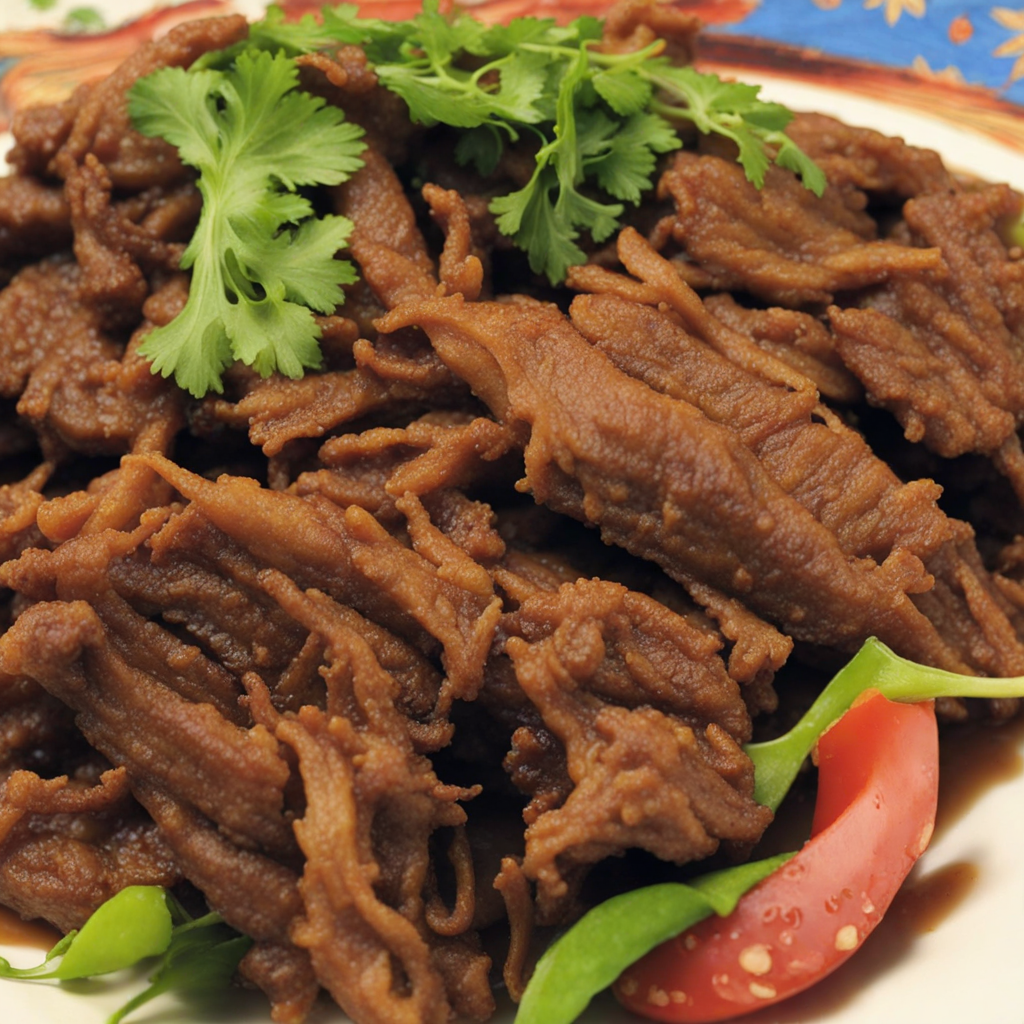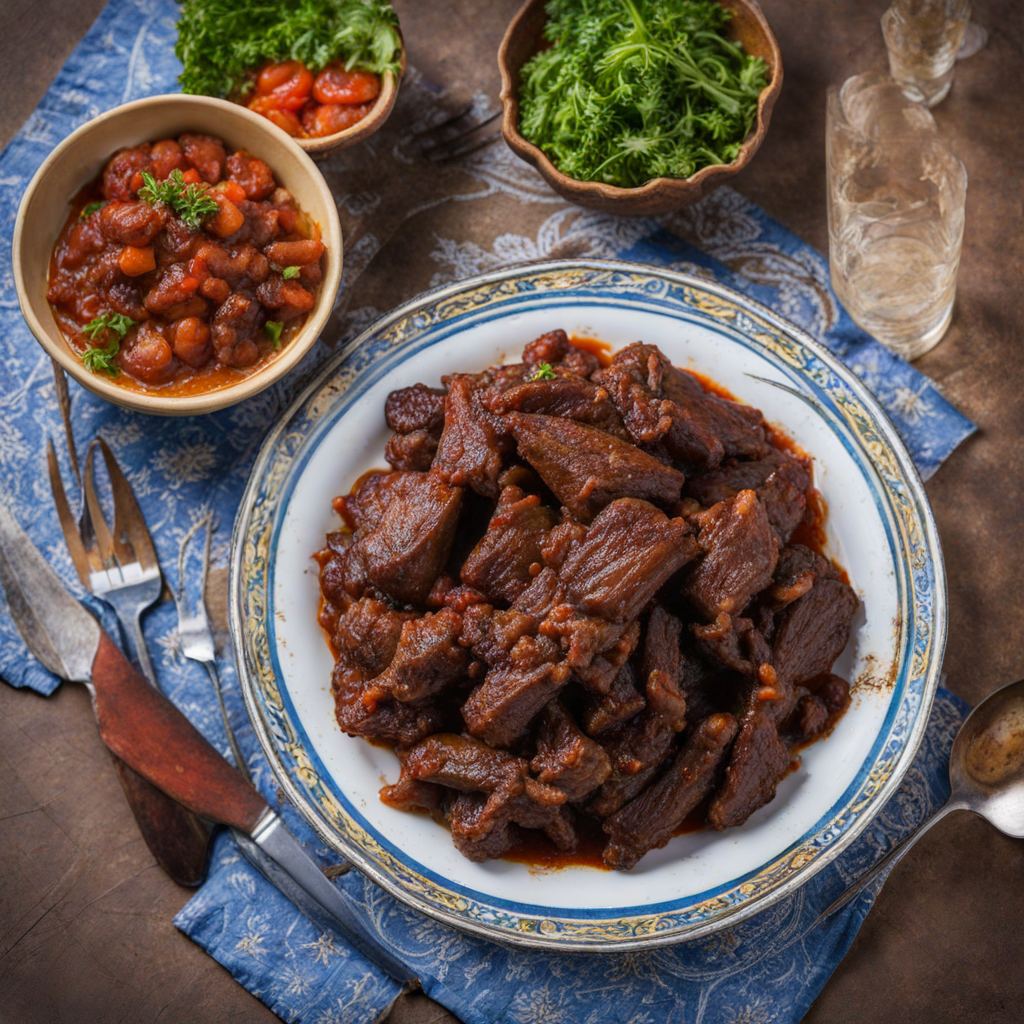Sweet Potato Pudding
Sweet Potato Pudding, a beloved dish from Malawi, is a comforting dessert that showcases the natural sweetness and vibrant color of sweet potatoes. The pudding is typically made by mashing cooked sweet potatoes and combining them with ingredients such as sugar, milk, and spices like cinnamon or nutmeg. This mixture is then baked to create a creamy, velvety texture that is both satisfying and indulgent. The rich orange hue of the pudding not only makes it visually appealing but also indicates the nutrient-rich profile of sweet potatoes, packed with vitamins and antioxidants. As you take your first bite, the warm flavors envelop your palate, with the sweetness of the potatoes harmonizing beautifully with the creamy milk and aromatic spices. Each spoonful offers a comforting nostalgia, reminiscent of home-cooked meals shared with family. The gentle sweetness is perfectly balanced, making it an ideal dessert that is not overwhelmingly sugary, allowing the natural flavors of the sweet potatoes to shine through. The pudding can be served warm or chilled, offering versatility for different occasions. This dish is often enjoyed during special gatherings and celebrations in Malawi, reflecting the country’s rich culinary heritage. Pairing Sweet Potato Pudding with a dollop of whipped cream or a sprinkle of nuts can elevate the experience further, adding texture and richness. It's a delightful way to explore the unique flavors of Malawian cuisine, inviting you to savor each bite while discovering the warmth and hospitality of its culture.
How It Became This Dish
The History of Nsima ya Mbata: A Culinary Staple of Malawi #### Origins and Ingredients Nsima ya Mbata is a traditional dish from Malawi, a landlocked country in southeastern Africa, known for its rich cultural heritage and diverse culinary practices. This staple food has deep roots in the agricultural practices of the Malawian people, primarily made from maize (corn) flour. The word “nsima” refers to the stiff porridge that forms the basis of many Malawian meals. The term “mbata” specifically denotes the use of unrefined maize flour, giving the dish its unique texture and flavor. Maize was introduced to Africa by European explorers in the 16th century, originating from the Americas. Its adoption was rapid, and it quickly became a staple food across many African nations, including Malawi. The climate of Malawi, with its fertile soil and favorable weather conditions, allowed for the cultivation of maize, ensuring that it became an integral part of the local diet. Nsima ya Mbata, therefore, not only embodies the agricultural practices of the region but also reflects the historical amalgamation of indigenous and external influences on African cuisine. #### Cultural Significance Nsima ya Mbata is more than just a dish; it is a pillar of Malawian identity. In Malawi, meals often revolve around nsima, which is typically served with various relishes, such as vegetables, fish, or meat. The preparation and consumption of nsima is deeply embedded in social customs, symbolizing hospitality and community. When guests visit a Malawian home, they are often offered nsima, which signifies respect and generosity. In traditional Malawian culture, food is also linked to various rituals and celebrations. Nsima plays a central role in communal gatherings, weddings, and festivals, where it is served in large quantities to accommodate guests. The act of sharing nsima with family and friends fosters a sense of belonging and unity among the community. The preparation of nsima is often a communal activity, with women gathering to cook and socialize, reinforcing social bonds and cultural ties. #### Preparation and Variations Preparing nsima ya Mbata is a labor-intensive process that reflects the dedication of Malawian women in maintaining their culinary traditions. The process begins with soaking maize kernels, which are then dried and ground into flour. Unlike refined flour, the use of mbata (unrefined flour) retains more nutrients and flavor, resulting in a heartier dish. The flour is mixed with water and cooked over a fire until it thickens into a smooth, dough-like consistency. The final product is shaped into balls and served hot. Over time, various regional variations of nsima have emerged, each reflecting local ingredients and culinary techniques. In some areas, nsima is made with a blend of maize and other grains, such as sorghum or millet, enriching its nutritional profile. Additionally, the accompanying relishes vary widely by region, incorporating local vegetables like pumpkin leaves, cassava, or groundnuts, and protein sources like fish from Lake Malawi or free-range chicken. #### Historical Development The history of nsima ya Mbata is intertwined with Malawi’s socio-economic evolution. During the colonial period, British rule brought about significant changes to agricultural practices and food production. While maize remained a staple, the colonial economy shifted towards cash crops, leading to increased reliance on imported goods. This period marked a transformation in dietary habits, as urbanization and economic changes influenced food availability and consumption patterns. In the post-independence era, particularly after 1964, Malawi faced numerous challenges, including food insecurity and economic difficulties. During this time, nsima remained a vital source of sustenance for many Malawians, symbolizing resilience in the face of adversity. The government encouraged maize cultivation to address food shortages, reinforcing the importance of nsima as a dietary staple. The late 20th and early 21st centuries saw a renewed interest in traditional foods and culinary heritage, as Malawians began to embrace their cultural identity. Efforts to promote local cuisine, including nsima ya Mbata, have increased, with various NGOs and initiatives supporting sustainable agriculture and food security. The revival of traditional dishes not only celebrates Malawian heritage but also contributes to the preservation of local biodiversity and culinary practices. #### Modern-Day Relevance Today, nsima ya Mbata remains a staple in Malawian households and is often featured in restaurants and food festivals. The dish has transcended its role as mere sustenance; it has become a symbol of Malawian culture and pride. In urban areas, where modern influences are prevalent, nsima is often paired with international cuisines, showcasing its versatility while maintaining its traditional roots. The global interest in African cuisine has also brought nsima to the forefront, with chefs and food enthusiasts exploring its potential in contemporary culinary contexts. Various adaptations of nsima have emerged, incorporating modern cooking techniques and flavors while honoring its traditional aspects. This has opened avenues for innovation, allowing nsima to evolve without losing its cultural significance. #### Conclusion Nsima ya Mbata is more than just a dish; it is a testament to the resilience, community, and cultural identity of the Malawian people. Its rich history reflects a journey shaped by agricultural practices, social customs, and historical developments. As Malawi continues to navigate the complexities of modern life, nsima remains a steadfast reminder of the importance of tradition, food security, and community. Whether served at a communal gathering, a family meal, or a festive celebration, nsima ya Mbata continues to unite Malawians in their shared culinary heritage, nourishing both body and soul.
You may like
Discover local flavors from Malawi







